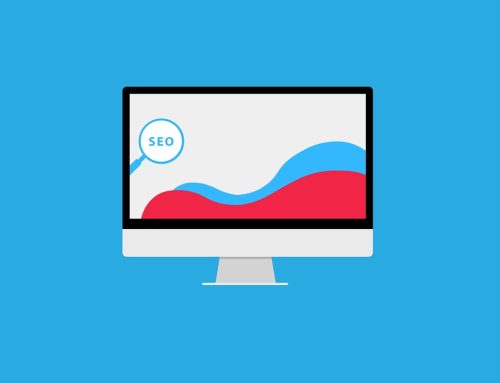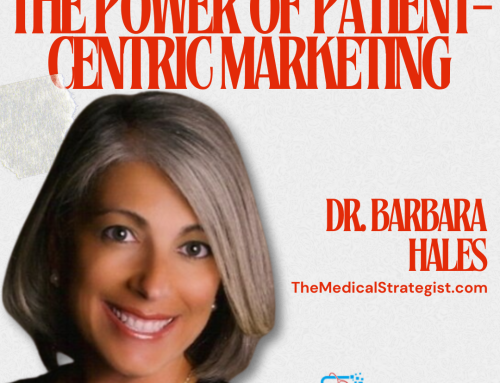Podcast: Play in new window | Download
Subscribe: RSS

In this episode, Barbara and Henry Klauke discuss:
- Improving your business with email marketing
- Frequency of sending out emails
- How to Avoid going into the Spam Folder
Key Takeaways:
“Use the 80-20 rule. For 80%, give tips, information, blogs, and information. The other 20% is where you give your call to action ” — Henry Klauke
Connect with Henry:
Connect with Barbara Hales:
Twitter: @DrBarbaraHales
Facebook: facebook.com/theMedicalStrategist
Business website:www.TheMedicalStrategist.com
Show website: www.MarketingTipsForDoctors.com
Email: Barbara@TheMedicalStrategist.com
Books:
YouTube: TheMedicalStrategist
LinkedIn: www.linkedin.com/in/barbarahales
TRANSCRIPTION- 069
Barbara: Welcome to another episode of Marketing Tips for Doctors. This is your host, Dr. Barbara Hales. And today, we have with us Henry Klauke. Henry is an entrepreneur who deals with improving people’s businesses with email marketing. Welcome to the show, Henry.
Thank you, Barbara. It’s such a joy to be here with you today.
Barbara: Most of our listeners are health professionals and of course they can get the email addresses from their current patients. How often do you recommend an email go out to them? And I assume you would recommend sending them something other than your appointment is due.
Henry: Right. That’s a great question. It’s one of the top questions people ask me. Oh, should I send it once a week, once a month? And the fun answer is it depends. Of course, that’s no fun but it’s, unfortunately, the truth. And what I mean by it depends is it’s really all about the audience. My suggestion is really as much as possible because people think, oh, I might be annoying my list by sending too often. Well, the truth is about 20% to 30% of all emails are opened. That’s the blanket rate. Of course, that depends on the industry as well. And if you have some super fans that love opening your emails, it’s going to be higher. But I would suggest as often as possible.
How Often Should You Send Emails?
You don’t want to bombard people with nagging in their inbox. That is for sure. But that’s a great question, Barbara. It’s one that people ask me all the time, you know, clients, non-clients, colleagues of mine. How often should I send it? Once a week? Once a month? More than that? Less than that? And it’s a tough question to answer.
It’s so broad like that without knowing more details about the business and about the customers. But for doctors, that gives me a little better idea. And the answer I would give, this will help some people, is if you’re not sending any, it’s worth starting with a monthly newsletter. That’ll get you psychologically, right, it’ll get you into that flow, into that method. But once you’re comfortable with that and are looking to up your email game so to speak, I really honestly recommend testing as much as possible, as much as is possible for you and your staff. You know, if that’s every day, that would be amazing.
I know that can sound like a tall order. But if you think about it, some people — You know, no one reads every email of anybody really even if it’s their favorite doctor. So let’s say if you’re doing the monthly email and someone misses it, oh, that’s a whole another month you’re going to miss the connection with them. So I would suggest, you know, a safe spot is like twice or three times a week if that’s manageable. But like I said, yeah, it’s great to start with something. Greater than zero is the right answer I’d say.
Barbara: So if they’re going to be sending out emails three times a week as you suggest, would you recommend it being a copy of a blog post?
Henry: Well, so here’s the thing. A lot of people treat an email as a blog and it’s not quite the same way. You want to keep emails really short, you know, about a minute, a minute and a half which comes out to be somewhere in the ballpark of 400 words or less. And I’ve seen emails that are 50 words or less. But what you can do, Barbara is linked to a blog so that way someone knows that you have a blog post. And if they’re interested in a topic and may have time for it, they’ll click and read it. If not, maybe they’ll read it later. But to open up the email and see this big long block of text, it’s not the right medium. That’s all.
Barbara: I agree with you. That would also include a link to a recently put-out podcast.
Henry: That’s right.
Barbara: So that a person can say, oh, this doctor has some interesting material for me to digest. And when I get a chance, I would love — Or when I’m on the treadmill, it will be a great opportunity to open the link for the podcast and hear the latest that the doctor has to offer.
Henry: Right. That’s exactly right, Barbara. And it’s all about how long can you trail on that curiosity. What I mean by that is it all starts with the subject line, right? It has to be compelling enough and interesting enough to have someone click on it, open it. But you can’t give it all away in a subject line. And then like what you’re talking about for the podcast, then you could tease at what we’re talking about here and say, hey, click here to read, to listen to more.
It’s really just keeping the readers engaged because you never want to assume that they’re going to read anything. That’s like one of my favorite things to live by, is the whole point of the subject line is to get people to open your email. And the whole point of the very first sentence is to get them to read that second sentence. And I could go on about this topic just because this is like a whole chapter of my upcoming book about links. But yes, you want to include as many links. I’m sorry.
Not as many links as possible but in as many emails as possible, you want to include I would suggest just one link per email because then you get your readers in the habit of clicking on those links. So they know, oh, I got an email from Barbara. Let’s see what it is. Oh, it’s a podcast. Oh, she’s always sending really great stuff. Let me click on that. That way, when it is more of a sales- or marketing-oriented email, like click here to schedule your next checkup appointment, for example, in their mind, they’re thinking, oh, wow, whenever I click on a link from Barbara, it’s a great experience. And so, I’m going to do it again this time.
Barbara: How often would you suggest putting a call to action with all of the emails that you send?
Henry: Yeah. Every single one. And the call to action doesn’t have to buy this or sign up for that. It could be like you said, check out my podcast. Click below. So really, I would suggest as much as possible for the call to action. Because again, if you’re only doing the call to action for something where the money is going to be exchanged, it’s going to be out of place compared to all the other emails you’re getting with no call to action. So, it’s all about consistency and congruency. It’s not necessarily just pitching, pitching, pitching all the time because I’ve unsubscribed from those emails before. But then at the same rate, it’s not about just always giving value because it’s going to be uncharacteristic to receive anything else.
Barbara: While it is easy for a doctor to get an email from a current patient, how does one go about getting emails from prospective patients?
Henry: Wow! That’s a great question. In terms of doctors, I’d have to brainstorm on that one. But one of the industry standards that you may have seen around is called, what they call a lead magnet where — Yeah, so it’s something for free typically like a download or a webinar video that someone would receive in return for their contact information. So, it would be like for — I’m working on my own right now which is I think it’s nine tips for an effective headline. So if someone wanted that, I’d say, oh yeah, where should I send it? Which email address? And so that would capture into my system, things like that. But I mean, you can get creative, right? There are all sorts of lists that you could buy. I’m sure you could rent a list. Like for example, if your target is patients with type 2 diabetes, I’m sure there’s a list that you could collaborate with or purchase from other people. It’s an option.
Barbara: Okay. Getting that list and building up a very captivating lead magnet is a great idea.
Henry: That’s right.
Barbara: What should a person do to prevent their email from going to the Spam folder?
How to Avoid the Spam Folder
Henry: Oh, that’s another favorite question. Another chapter of my book. So we’ll talk about links first just because I’ve talked about it so often, is if you have more than one — Okay. Let me make sure this is very clear. More than one destination in your email. So if you have — You can have a couple of different links as long as they’re going to the same place. I hope that makes sense.
So you could say, hey, Barbara, start the body of your email. Hey, click the link right here to listen to the podcast. It’s a really great one. I’m really happy to share it with you. Let me know what you think. Henry. And then PS, here is the link again. But it has to be the same thing. Because if you’re going all different places, that’s a telltale sign that you’re going to get flagged for Spam. And basically, you know, there’s a — I forgot the guy’s name. But he has a really excellent principle. It’s one of Warren Buffett’s like right-hand man. His idea is think of what a spam email looks like and just do the opposite of all that stuff. So all caps in the subject line, that’s a no-no. Three punctuation marks in a row, that’s another no-no. So like you know, three dollar signs, that’ll get flagged. Even dot-dot-dot, for some people, that’s like a hazy one. But if you’re just starting out, they may flag you for that. Yeah, all caps. What else? A lot of images, like if it looks like a marketing email. That’s why I’ve been trained in — What I do is just plain text really. Plain text. It’s all on the writing for me. I’m sure there’s more than that. But yeah, basically, just pretend like you’re sending an email to a friend. Write in that style.
Barbara: Mine is all the things you might say to a friend.
Henry: Yeah. Right. Sure, sure. Yeah, you never know.
Barbara: What tips would you recommend somebody that is just, you know, starting out and saying, okay, I’m going to do email marketing? What do you recommend?
Henry: What do I recommend in terms of like software, in terms of strategy?
Barbara: Yeah. Both.
Henry: Yeah. I could talk about it all. Okay. Let’s see. Probably the most popular starting out, what do they call it, ESP, email service provider which basically just means a service that will send out mass emails for you is Mailchimp. That’s a very popular free option. You get about — I think you get up to 2000 email addresses for free. So, it’s pretty good. I use Aweber which also has a pretty good free option. But basically, just pick one and see how it works. If you’re a really huge practice, you might want to look at something like Infusionsoft or HubSpot. Those are just bigger enterprise, tools that work with other software.
But in terms of strategy, yeah, so I would say — I’m not sure how this would look for doctors but — Like I talked about where you’re not pitching all the time and you’re not giving value all the time. The magic number is like the 80-20 principle. So you want to be 80% giving tips, information, blogs, and the podcasts as we talked about. That other 20% is where you want something from them whether that’d be buying another year’s worth of contacts, for example. So that’s about the rhythm to do it.
And I would really make sure you pay attention to those subject lines and test them out. That’s what’s the most fun about it, is I feel like people can get really up in their head about, oh my gosh, is this email going to completely flop? And you’re never going to know unless you send it. And what’s cool about those email service providers I mentioned is they track everything. So if you notice one of your emails, it gets opened by many more people than the others, then maybe you want to follow that pattern. Or test further and see, oh, what was it about this email that was so special? And if a lot of people clicked your link, that’s the same thing. So there’s a lot of — If you’re an analytical type, you could really get your hands dirty with this stuff, with all the data that you can get from email marketing.
Barbara: Why is it that you chose Aweber over iContact or Constant Contact?
Henry: Yeah. I mean, so it’s a personal thing for me as I bought this outstanding funnel software called GrooveFunnels. And it’s an all-in-one. It’s landing pages, video hosting. It’s basically a replacement for ClickFunnels and Kajabi all in one. They have an email part of it but it’s still in beta. And Aweber works with this GrooveFunnels.
Barbara: How is that spelled? Is that G-R-E-W?
Henry: Groove like G-R-O-O-V-E. Like groovy.
Barbara: Oh, Groove.
Henry: GrooveFunnels, yes. I’d be happy to share a link with you and the audience. But yeah, it’s a really up-and-coming thing. I don’t want to sell it on this platform but I just get a kick out of it. I bought it. It was built by this guy, Mike Filsaime, who created Kartra which is another excellent webtool. But yeah, I mean really, people, you can get really nitty gritty on like which one. They’re all practically the same. They do the same things. I mean, Aweber is good and it’s really easy to switch. You can take all your lists, all your emails and just move them to another provider.
Barbara: Can you do webinars on the GrooveFunnels?
Henry: So that’s their plan. They’re still fixing it. It was kind of buggy. But yes, it will have webinars. I’m not sure when. But yeah, it’s a powerful tool.
Barbara: Okay, great. Well, is there anything else that you would like to leave our listeners with as we wind down this episode?
Henry: I feel like I’ve talked quite a bit. I’m just excited for, you know, for people to get more into emails. I’ll share this really fun stat, three fun stats. These are my favorites. So 99% of all Americans check their email every day. Probably not that surprising but it’s 99%. Maybe it would be high 90s but very, very high. The other one is 50% of Americans check their email more than 10 times a day which is more where I fit in the range. I’m sure you do too, Barbara. The third one is the ROI, return on investment, of email marketing is 42X and that’s just because it’s so scalable where the input is the same. It’ll take me the same amount of time and money basically to write an email to 10 people versus 10,000.
Barbara: Well, that’s certainly something for our listeners to keep in mind. If you’re going to invest your time and effort into only one modality to start, email marketing is the one that will bring you the best results.
Henry: Right. And it can be a long game because you’re building your list, you’re building your list which is always getting better.
Barbara: Well, thank you so much for being with us here today. This is another episode of Marketing Tips for Doctors with your host, Dr. Barbara Hales. Till next time.



